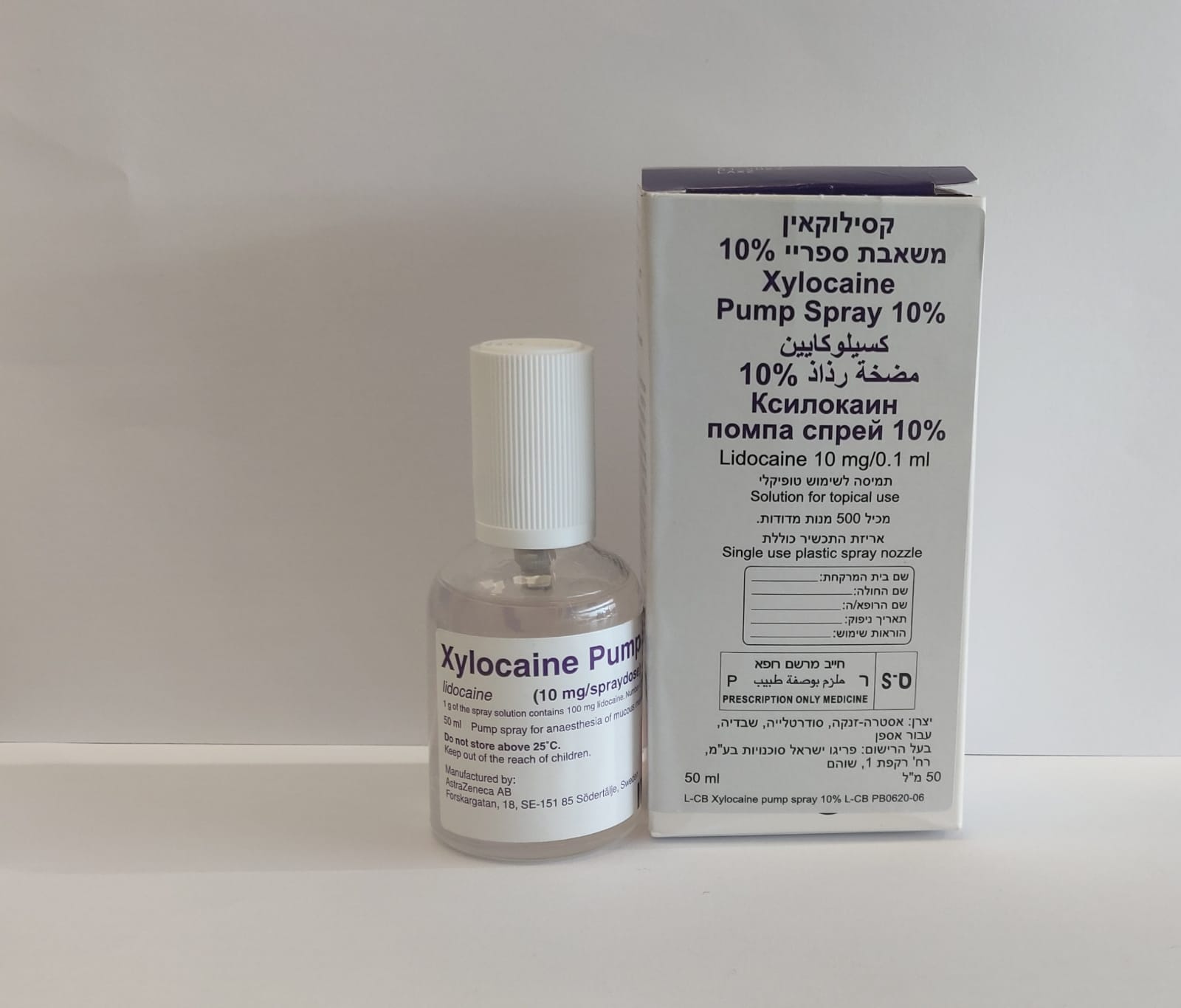Quest for the right Drug

קסילוקאין משאבת ספריי % 10 XYLOCAINE PUMP SPRAY 10 % (LIDOCAINE)
תרופה במרשם
תרופה בסל
נרקוטיקה
ציטוטוקסיקה
צורת מתן:
חיצוני : TOPICAL
צורת מינון:
תמיסה : SOLUTION
עלון לרופא
מינוניםPosology התוויות
Indications תופעות לוואי
Adverse reactions התוויות נגד
Contraindications אינטראקציות
Interactions מינון יתר
Overdose הריון/הנקה
Pregnancy & Lactation אוכלוסיות מיוחדות
Special populations תכונות פרמקולוגיות
Pharmacological properties מידע רוקחי
Pharmaceutical particulars אזהרת שימוש
Special Warning עלון לרופא
Physicians Leaflet
Overdose : מינון יתר
4.9. Overdose Acute systemic toxicity Toxic reactions originate mainly in the central nervous system and the cardiovascular system. Central nervous system toxicity is a graded response with symptoms and signs of escalating severity. The first symptoms are circumoral paraesthesia, numbness of the tongue, light-headedness, hyperacusis and tinnitus. Visual disturbances and muscular tremors are more serious and precede the onset of generalized convulsions. Unconsciousness and grand mal convulsions may follow, which may last for a few seconds to several minutes. Hypoxia and hypercarbia occur rapidly following convulsions due to the increased muscular activity together with the interference with normal respiration. In severe cases apnoea may occur. Acidosis increases the toxic effects of local anaesthetic. Cardiovascular effects are only seen in cases with high systematic concentrations. Severe hypotension, bradycardia, arrhythmia and cardiovascular collapse may be the result in such cases. Cardiovascular toxic effects are generally preceded by signs of toxicity in the central nervous system, unless the patient is receiving a general anaesthetic or is heavily sedated with drugs such as benzodiazepine or barbiturate. Recovery is due to redistribution and metabolism of the local anaesthetic drug from the central nervous system. Recovery may be rapid unless large amounts of the drug have been administered. Treatment of acute toxicity Treatment of acute toxicity should be instituted at the latest when twitches occur. The necessary drugs and equipment should be immediately available. The objectives of treatment are to maintain oxygenation, stop the convulsions and support the circulation. Oxygen must be given and, if necessary, assisted ventilation (mask and bag). An anticonvulsant should be given i.v if the convulsions do not stop spontaneously in 15-30 sec. Thiopentone sodium 1-3 mg/kg i.v. will abort the convulsions rapidly. Alternatively diazepam 0.1 mg/kg body-weight i.v. may be used although its action will be slower. Prolonged convulsions may jeopardise the patient's ventilation and oxygenation. If so, injection of a muscle relaxant (e.g. succinylcholine 1 mg/kg body-weight) will facilitate ventilation and oxygenation can be controlled. Early endotracheal intubation must be considered in such situations. If cardiovascular depression is evident (hypotension, bradycardia), ephedrine 5-10 mg i.v. should be given and repeated if necessary, after 2-3 minutes. Should circulatory arrest occur, immediate cardiopulmonary resuscitation should be instituted. Optimal oxygenation and ventilation and circulatory support as well as treatment of acidosis are of vital importance, since hypoxia and acidosis will increase the systemic toxicity of local anaesthetics. Children should be given doses commensurate with their age and weight.

שימוש לפי פנקס קופ''ח כללית 1994
לא צוין
תאריך הכללה מקורי בסל
01/01/1995
הגבלות
תרופה שאושרה לשימוש כללי בקופ'ח
מידע נוסף
